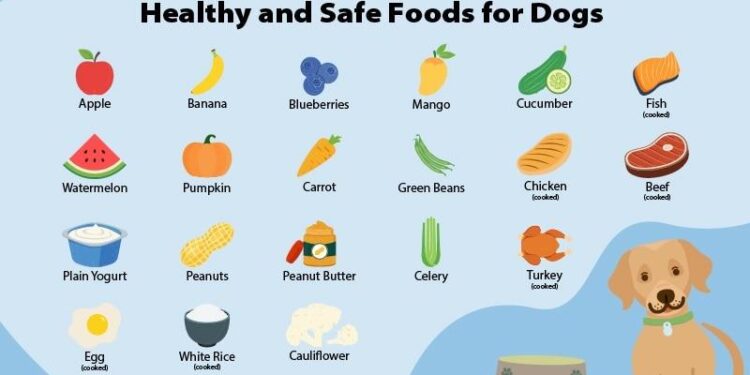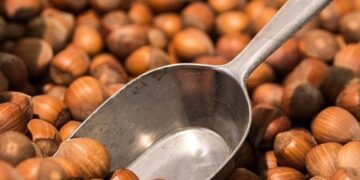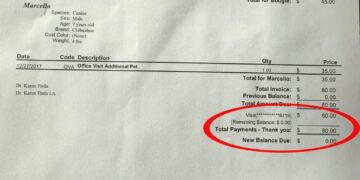Table of Contents
Part I: The Flawed Blueprint: My Days of Recommending a Dangerous Fix
Introduction: The Story of Max and My Professional Wake-Up Call
I want to tell you about Max.
He was a magnificent Golden Retriever, all goofy smiles and boundless affection, but he was plagued by a gut that seemed to betray him constantly.
His owner, Sarah, was one of the most dedicated people I’d ever M.T. She had navigated a maze of premium kibbles, limited-ingredient diets, and veterinary advice, yet Max’s chronic digestive upset persisted.
When she came to my practice years ago, her frustration was palpable, matched only by her deep love for her dog.
In those early days of my career, I was armed with the confidence of my training and the conventional wisdom passed down through generations of veterinarians.
When Sarah described Max’s symptoms, a familiar prescription immediately came to mind.
“Let’s put him on a bland diet,” I said, with the assurance of someone offering a time-honored cure.
“Boiled chicken breast and plain white rice.
It’s gentle, it’s easy to digest, and it will give his system a chance to reset.”
My reasoning was sound, or so I thought.
The combination is low in fat and highly digestible, making it easier for a compromised gastrointestinal (GI) tract to process.1
It’s also incredibly palatable, which is a huge advantage when you’re trying to nourish a dog who has lost his appetite.1
It was, and in many circles still is, the standard first-line defense against a simple upset stomach.
The initial results were nothing short of miraculous.
Within days, Max’s diarrhea resolved.
He was eating with gusto for the first time in months.
Sarah was ecstatic, and I felt a surge of professional pride.
We had cracked the code.
We had found the simple, wholesome solution that had eluded them for so long.
Convinced we were on the right path, we decided to keep him on the homemade diet long-term.
It seemed so much purer, so much more loving than anything that came from a bag.
That false dawn was the beginning of a slow, heartbreaking decline.
Over the next year, the vibrant, energetic Max began to fade.
The change was insidious.
His glorious golden coat became dull, dry, and brittle.
He developed flaky, irritated patches of skin that we initially dismissed as allergies.
He seemed tired, his once-insistent nudges for a walk becoming half-hearted lifts of his head.
He was losing muscle mass, a subtle wasting away that we struggled to explain.
We ran blood panels and allergy tests, always focusing on his “sensitive stomach” as the root of all evil.
The diet, our supposed cure, was the one thing we never questioned.
The wake-up call came in the form of a catastrophic collapse.
One evening, Max suffered a seizure.
It was terrifying and violent.
Rushed to the emergency clinic, more tests revealed the horrifying truth.
Max was suffering from severe, advanced nutritional deficiencies.
His bones were dangerously demineralized from a profound lack of calcium.
His bloodwork showed a cascade of other imbalances that pointed to chronic malnutrition.
The diet I had so confidently prescribed, the simple meal of chicken and rice that Sarah had lovingly prepared for him every single day, had been slowly and systematically starving him of the essential nutrients required for life.
It was a failure of the most fundamental kind, and it was my failure.
That day, Max’s tragedy became my crucible, forcing me to abandon a piece of dogma I once held as truth and begin a journey to understand what a dog’s body truly needs to thrive.
Why We All Reach for This Broken Tool: The Allure of Simplicity
Max’s story is not unique, and that is precisely what makes it so important.
The impulse to feed a simple, home-cooked meal of chicken and rice stems from a place of deep love and concern.
In an era of frequent pet food recalls and a growing distrust of complex ingredient labels, the desire for transparency and control is a powerful motivator for pet owners.2
Preparing a meal with your own hands feels like the ultimate act of care, a way to ensure your beloved companion receives only fresh, natural, and wholesome ingredients.2
This trend is driven by a belief that fresh food offers superior nutritional value, improves digestion, and allows for a level of personalization that commercial diets cannot match.5
The problem is that this powerful emotional drive often collides with a dangerous lack of nutritional science.
The very thing that makes the chicken and rice diet so appealing—its simplicity—is also its greatest flaw.
The diet’s temporary effectiveness is what makes it so deceptive.
For short-term cases of GI upset, a bland diet can indeed be beneficial.
It provides a low-fat, easily processed meal that allows an inflamed gut to rest and recover.1
Its high palatability encourages a sick dog to eat, preventing dehydration and further weakness.1
Vets have historically recommended it as an alternative to fasting, a way to provide some nourishment while the system heals.7
But these short-term gains create a dangerous illusion of health.
They mask the profound nutritional voids that exist within that simple two-ingredient meal.
While the visible problem (diarrhea) might disappear, an invisible crisis is just beginning.
The diet is critically deficient in at least 17 essential nutrients required by a dog for basic bodily function.7
Feeding it for more than a few days, as experts recommend discontinuing it after three to four days, is like patching a hole in a roof with cardboard.
It might stop the leak for a moment, but it offers no real protection and is guaranteed to fail, causing far more damage in the long R.N.1
The conflict between a pet owner’s loving intent and the disastrous outcome of an unbalanced homemade diet is one of the great tragedies in companion animal care.
A shocking 95% of homemade dog food recipes—many found online and even some written by veterinarians not specialized in nutrition—are missing key nutrients.
A staggering 83% have multiple, serious deficiencies that can jeopardize a dog’s long-term health.8
The path to malnutrition, as I learned with Max, is often paved with the very best intentions.
Part II: The Epiphany: A Dog’s Diet Isn’t a Meal, It’s a House
The Moment of Realization: From Ingredients to Architecture
In the aftermath of Max’s diagnosis, I was consumed by a need to understand where I had gone so wrong.
I buried myself in veterinary nutrition textbooks, scientific journals, and research papers, the pages filled with complex charts of amino acids, minerals, and fatty acids.4
The weight of my mistake was heavy, but with every study I read, a new picture began to form.
My fundamental error, and the error so many of us make, was thinking about food as a simple list of ingredients.
Protein, check.
Carbohydrates, check.
It’s a way of thinking encouraged by a popular but deeply flawed analogy: the idea that “food is fuel”.10
This model suggests the body is like a high-performance race car and food is the gasoline.
As long as you put in enough high-octane “fuel” (calories, protein, carbs), the engine will R.N.
But a living organism is not a machine.10
A dog’s body is an incredibly complex, self-regulating biological system.
The “food as fuel” analogy falls apart because it ignores the vast universe of micronutrients—the vitamins and minerals that don’t provide “fuel” but are absolutely critical for every single process in the body, from building bones to regulating hormones to maintaining cell communication.10
My epiphany came when I stopped seeing food as fuel and started seeing it as something else entirely: information.
A blueprint.
A set of architectural plans for building and maintaining a living structure.
This shift led me to a new, more powerful analogy that has guided my practice ever since: building a house.11
Introducing the Nutritional House Analogy
To truly understand canine nutrition, we must abandon the simplistic “fuel” model and embrace the more accurate “architecture” model.
Think of it this way:
A diet of only chicken and rice is like a temporary, unsafe shelter.
Imagine a storm is coming (diarrhea), and in a panic, you throw up a few pieces of lumber for walls and a sheet of drywall for a roof.
It might keep the rain off for an hour.
It provides the illusion of shelter.
But it is not a house.
It has no foundation, no wiring, no plumbing, no insulation, and no load-bearing beams.
It is a structure that is fundamentally unsound and doomed to collapse.
Living in it for any length of time would be disastrous.
This is what a long-term chicken and rice diet is for a dog.7
A complete and balanced diet, on the other hand, is a well-constructed, permanent home.
It is a complex structure built from a detailed blueprint.
It has a solid concrete foundation, a sturdy wooden frame, intricate electrical and plumbing systems, and proper insulation to protect against the elements.
Every component is present in the right amount and in the right relationship to every other component.
It is built to meet or exceed a strict building code, ensuring it is safe, stable, and will provide a healthy environment for a lifetime.
This “Nutritional House” analogy is not just a clever turn of phrase; it’s a more scientifically accurate way to conceptualize nutrition.
The catastrophic failures of the chicken and rice diet are not due to a lack of “fuel”—it has protein and carbs.
The failures are due to a lack of essential building materials and operating systems.
The minerals that form the foundation, the trace elements that act as the wiring, and the vitamins that serve as the plumbing are not optional luxuries; they are non-negotiable requirements for a habitable structure.
By understanding this, we can begin to see why simply providing “ingredients” is not enough.
We must become the architects and master builders of our dogs’ health.
Part III: Deconstructing the Nutritional House: The Anatomy of a Truly Complete Diet
Using our analogy, let’s walk through the construction of a proper “Nutritional House” and see exactly where the simple chicken-and-rice shelter falls catastrophically short.
This isn’t just theory; this is the science that explains why dogs like Max suffer.
The Foundation: Calcium & Phosphorus (The Concrete and Rebar)
Every sound structure begins with a foundation.
In the nutritional house, this foundation is built from minerals, primarily calcium and phosphorus.
Their strength depends not just on their presence, but on their precise ratio to one another.
This is arguably the most critical and dangerously overlooked aspect of any homemade diet.
The Science: A dog’s body requires a carefully balanced ratio of calcium to phosphorus (Ca:P), ideally around 1.2:1 to 1.4:1.14
Muscle meats like chicken are extremely high in phosphorus but contain virtually no calcium.13
Rice is also deficient in calcium.
When a dog is fed a diet with massive amounts of phosphorus and negligible calcium, the body panics.
To maintain the critical level of calcium in the blood needed for nerve function and muscle contraction, the parathyroid gland releases a hormone that aggressively pulls calcium from the only available source: the bones.
This condition is called nutritional secondary hyperparathyroidism.
The body is literally dissolving its own skeleton to survive.
The Clinical Consequences: This is not a minor imbalance; it is a recipe for skeletal collapse.
In growing puppies, it leads to rickets, causing soft, bowed, and deformed bones.15
In adult dogs, it results in osteopenia (loss of bone density) and the infamous “rubber jaw” syndrome, where the jawbones become soft and pliable.15
The clinical signs are devastating and often mistaken for arthritis or old age: bone pain, a stiff or limping gait, reluctance to play or move, and weakness.15
Eventually, this leads to spontaneous, pathological fractures from minor trauma.
The dog’s framework crumbles because its foundation was made of sand instead of concrete.
Furthermore, severe calcium deficiency (hypocalcemia) can cause muscle twitching and trembling, which can escalate into full-blown, life-threatening seizures, as it did with Max.17
The Framework: Proteins & Fats (The Studs and Beams)
Once the foundation is laid, you need the framework—the studs and beams that give the house its shape and structural integrity.
These are the macronutrients: proteins and fats.
The Science: Protein is more than just a generic building material.
It must provide 10 specific essential amino acids that a dog’s body cannot synthesize on its own.14
These are the unique types of lumber needed for specific parts of the house.
Fats are equally critical.
They are the most concentrated source of energy, but more importantly, they form the structure of every cell membrane, are required for the production of hormones, and are essential for absorbing the fat-soluble vitamins A, D, E, and K.20
Essential fatty acids, like Omega-3 and Omega-6, are the specialized, load-bearing beams of the structure.20
The Common Mistake: The chicken-and-rice diet provides protein and a small amount of fat, but it’s a monotonous supply.
Relying solely on lean chicken breast misses the richer, more diverse amino and fatty acid profiles found in a varied diet that might include different cuts of meat, organ meats (like liver), or fish.1
It’s like building the entire house frame with only one size of 2×4, ignoring the need for stronger beams and specialized joints.
While not as immediately catastrophic as the Ca:P imbalance, it contributes to a weaker overall structure, affecting everything from skin and coat health to immune function over time.
The “Invisible” Systems: Vitamins & Minerals (The Wiring, Plumbing, and Insulation)
A house can have a foundation and a frame, but without wiring, plumbing, and insulation, it is an unlivable shell.
These are the micronutrients—the vitamins and trace minerals.
They are required in tiny amounts but are absolutely essential.
Their absence is the silent, insidious reason the chicken-and-rice shelter is a deathtrap.
Studies analyzing homemade diet recipes consistently find them to be dangerously deficient in these critical components.3
Let’s examine the faulty systems in the chicken-and-rice house:
- Zinc (The Electrical System): Zinc is a master mineral, involved in over 100 enzymatic reactions that control everything from immune response to cell replication and protein synthesis.22 It’s the home’s entire electrical grid.
- The Deficiency: Chicken and rice are poor sources of zinc.
- The Clinical Consequences: When the power grid fails, the house goes dark. Zinc deficiency leads to a condition called zinc-responsive dermatosis, characterized by crusty, scaly, and itchy skin lesions, particularly around the eyes, muzzle, and groin.23 The coat becomes dull and dry, with patches of hair loss.25 Wound healing is delayed, and the dog becomes susceptible to frequent or recurring infections due to a compromised immune system.26 In puppies, it can cause stunted growth.23
- Copper (The Plumbing & Communications): Copper is essential for forming red blood cells, creating connective tissue (like cartilage and ligaments), and producing pigment for the coat.27 It’s the plumbing and the internal communication lines of the house.
- The Deficiency: Again, chicken and rice are not reliable sources.
- The Clinical Consequences: Faulty plumbing leads to leaks and system failures. Copper deficiency can cause anemia, a rough coat, and a loss of hair pigment (a black dog’s coat may turn reddish).27 In growing animals, it can contribute to skeletal deformities.29
- Vitamin E (The Fire Sprinklers & Security System): Vitamin E is a powerful, fat-soluble antioxidant. Its primary job is to protect cell membranes from oxidative damage caused by free radicals.30 It’s the home’s security system and fire sprinklers, preventing internal damage.
- The Deficiency: Vitamin E is found primarily in plant oils, seeds, and some organ meats—all absent from a simple chicken and rice diet.30
- The Clinical Consequences: Without a security system, the house is vulnerable. Vitamin E deficiency can lead to a host of problems, including cell damage, muscle inflammation and weakness, poor vision, neurological dysfunction, and even reproductive failure.31 The immune system is weakened, leaving the body open to attack.34
- Choline (The HVAC & Smart Home System): Choline is a vitamin-like nutrient vital for maintaining the structure of cell membranes, for normal fat metabolism in the liver, and as a building block for acetylcholine, a critical neurotransmitter.35 It’s the home’s climate control and smart automation system, ensuring all operations run smoothly.
- The Deficiency: Major sources include eggs, liver, and fish—again, missing from the basic recipe.14
- The Clinical Consequences: A malfunctioning HVAC system leads to toxic buildup. Choline deficiency causes fat to accumulate in the liver, a dangerous condition called hepatic steatosis or “fatty liver”.35 This can lead to elevated liver enzymes, vomiting, and eventually, severe liver dysfunction.38 It has also been linked to cognitive issues, as the brain relies on choline for proper function.39
The following table summarizes the catastrophic failures that occur when a dog is forced to live in a house with these missing systems.
| Nutrient | Primary Role in the “Nutritional House” | Documented Clinical Signs of Deficiency |
| Calcium | Foundation (Concrete) | Muscle tremors, twitching, uncoordinated gait, weakness, panting, face rubbing, seizures, bone pain, pathological fractures, “rubber jaw”.15 |
| Phosphorus | Foundation (Rebar) | Muscle weakness, hemolytic anemia (can cause red/dark urine), mental depression, rapid/shallow breathing, seizures, poor bone formation (rickets).15 |
| Zinc | Electrical System | Crusty, itchy, or thickened skin lesions (zinc-responsive dermatosis), dull/dry coat, hair loss, poor wound healing, frequent infections, diarrhea, stunted growth in puppies.23 |
| Copper | Plumbing & Communications | Anemia, loss of hair pigment (depigmentation), rough haircoat, poor growth, skeletal deformities in young animals, reproductive failure, neuromuscular problems.27 |
| Vitamin E | Insulation & Security System | Muscle weakness and inflammation, neurological dysfunction, poor vision, impaired immune system, reduced fertility, “brown bowel syndrome” (intestinal hemorrhage).30 |
| Choline | HVAC & Smart Home System | Fatty liver disease (hepatic steatosis), vomiting, elevated liver enzymes, high cholesterol, potential for cognitive dysfunction and neurological issues.35 |
The Building Code: Demystifying AAFCO and “Complete & Balanced”
How do we know what the blueprint for a safe and habitable house should look like? In the world of pet food, the answer lies with the Association of American Feed Control Officials (AAFCO).
The Analogy: AAFCO is the organization that writes the International Building Code.
The code doesn’t “approve” or “certify” any specific house.
Instead, it sets the minimum standards that any house must meet to be considered safe for occupancy.
A builder must follow this code, and the final structure must meet or exceed its requirements.
The Explanation: This is a critical point of confusion for many pet owners.
AAFCO does not approve, regulate, or certify pet foods.42
It is a voluntary membership association of feed control officials who establish model regulations and standards for the industry.
Their most important contribution is the creation of Nutrient Profiles for dogs and cats at different life stages (e.g., “growth and reproduction” for puppies and “adult maintenance” for adult dogs).44
These profiles list the minimum—and in some cases, maximum—amounts of every essential nutrient a pet needs.
For a commercial pet food to legally carry the phrase “complete and balanced” on its label, it must meet these AAFCO nutrient profiles.43
This can be verified in one of two ways:
- By Formulation: The recipe is analyzed by computer to ensure it meets the nutrient levels established in the AAFCO profiles.
- By Feeding Trial: The food is fed to a group of dogs for a set period under strict protocols to prove it provides adequate nutrition.43
The Takeaway: The “complete and balanced” statement is your assurance that a diet has been built to code.
It is the legal and scientific standard for a “livable” nutritional house.
A simple homemade diet of chicken and rice fails to meet this building code on dozens of critical points, making it an unpermitted, unsafe structure from the very start.7
The danger is that the collapse isn’t immediate.
It’s a slow, cumulative process.
A dog can appear “fine” for months while its skeletal foundation is crumbling and its internal systems are failing, which is precisely what makes this common advice so profoundly dangerous.
Part IV: The Architect’s Toolkit: A Safe and Responsible Guide to Home-Cooking
The desire to provide our dogs with fresh, wholesome food is a good one.
The goal is not to abandon this impulse but to channel it with the wisdom and precision of a master builder.
Having deconstructed the dangerously flawed chicken-and-rice shelter, we can now focus on the tools and principles required to construct a truly sound nutritional house.
Why You Can’t Eyeball the Blueprint: The Perils of “Freestyle” Cooking
The Analogy: No responsible person would build a house by simply “eyeballing” the measurements and throwing materials together.
You need a precise, architect-drawn blueprint that accounts for every load-bearing wall, every electrical circuit, and every plumbing connection.
Yet, this is exactly what many well-intentioned owners do when they “freestyle” a homemade diet.
This approach is fraught with peril.
Board-certified veterinary nutritionists at institutions like Tufts University have identified several common and disastrous mistakes that owners make, even after receiving a professionally formulated recipe.45
These errors can quickly turn a well-designed blueprint into a dangerously unbalanced diet:
- Ingredient Substitution: This is one of the most frequent and damaging mistakes. An owner might think, “The recipe calls for white potatoes, but sweet potatoes are healthier, right?” This seemingly innocent swap can have major consequences. For example, substituting the same weight of sweet potato for white potato can increase the calories by approximately 60%, while also altering the mineral and vitamin profile.45 Every ingredient has a unique nutritional fingerprint, and substitutions are not interchangeable.
- Changing Cooking Methods: How you cook matters. A recipe might specify boiling potatoes and baking chicken separately. An owner looking for convenience might throw everything into a crockpot. This changes the final nutrient composition, as water-soluble nutrients can leach into the broth and the final moisture content of the entire meal is altered, affecting caloric density.45
- Omitting or Altering Supplements: This is a critical, non-negotiable error. Many owners are drawn to home-cooking to avoid “processed” ingredients and may view a vitamin-mineral supplement as an unnatural additive. They believe “whole foods” should be enough. This is fundamentally wrong. It is virtually impossible to create a complete and balanced diet for long-term feeding using only whole food ingredients without it becoming prohibitively complex and expensive. The supplement is the “wiring, plumbing, and insulation” in a concentrated, reliable form. It is specifically designed to fill the precise nutritional gaps left by the whole food ingredients. Omitting it guarantees the diet will be deficient.45
- Misunderstanding Ratios and Volume: Owners often judge a meal by eye, assuming it should contain a large volume of meat. However, recipes are balanced based on calories, not volume. Because protein and fat are more calorie-dense than many carbohydrate sources, a perfectly balanced meal for a dog might visually appear to be mostly carbohydrates (like rice or potatoes) with a smaller portion of meat and just a teaspoon of oil. An owner thinking “that’s not enough protein” might add more meat, which throws the entire blueprint—especially the critical Ca:P ratio—into disarray.45
Hiring the Professionals: The Role of the Veterinary Nutritionist (The Architect)
The Analogy: If you were building a custom, high-end home tailored to your family’s specific needs, you wouldn’t download a generic blueprint from the internet.
You would hire an architect.
For a custom-built diet, the gold standard is to hire a board-certified veterinary nutritionist.
These are veterinarians who have undergone years of additional, rigorous residency training specifically in animal nutrition.
They are the true architects of pet health.
They can design a custom recipe (the blueprint) that is perfectly tailored to your individual dog’s needs, taking into account their age, breed, activity level, and any specific health conditions they may have, such as kidney disease, heart disease, or food allergies.46
Leading veterinary institutions like Tufts University and UC Davis have dedicated nutrition services that provide these consultations, creating meticulously detailed recipes that specify exact ingredients, cooking methods, and necessary supplements.48
This is the safest and most reliable way to embark on a long-term home-cooking journey.
Following the Blueprint: Formulation Tools & Supplements (The General Contractor and Building Supplies)
The Analogy: Once the architect delivers the blueprint, you need a competent general contractor and a reliable source for high-quality building materials to ensure the house is built exactly to spec.
For many owners, a full consultation with a veterinary nutritionist may be inaccessible or impractical.
This is where modern formulation tools and their companion supplements serve as the “general contractor.” They provide a bridge between expert nutritional science and the home kitchen.
A prime example of such a system is Balance IT.51
These platforms, often developed and maintained by board-certified veterinary nutritionists, work on a simple but powerful principle 52:
- You Provide the Specs: You enter your dog’s specific information—age, weight, breed, activity level, and any health conditions (which may require veterinary approval).51
- You Choose Your “Materials”: You select the whole food ingredients you want to use from a pre-vetted list of proteins, carbohydrates, and fats.51
- The “Autobalancer” Creates the Blueprint: The software’s algorithm, which has the nutritional data for thousands of ingredients and AAFCO requirements built-in, instantly calculates the exact gram amounts of each ingredient needed to create a balanced base meal.51
- The Critical Component is Added: The system then specifies the precise amount of a companion vitamin-mineral supplement that must be added to that specific recipe. This supplement is the key. It is formulated to perfectly fill all the micronutrient gaps—the missing calcium, zinc, copper, vitamins, and other trace elements—that are inevitably left by the whole food ingredients.52
This approach brilliantly solves the core problem of homemade diets.
It honors the owner’s desire to be the “chef” and use fresh, recognizable ingredients, fulfilling their emotional need for control and transparency.2
Simultaneously, it outsources the incredibly complex nutritional science to experts, ensuring the final meal is “built to code” and safe for long-term habitation.
It reframes the concept of control from “freestyle guessing” to “precise execution of an expert plan.” This is the win-win that allows owners to cook with love, but also with the scientific certainty their dog is getting everything it needs to thrive.
Part V: Conclusion: From a Temporary Shelter to a Lifelong Home
Building a Better Future: A Success Story
I will always carry the lessons from Max’s tragic decline.
His story is a permanent reminder of the danger of well-intentioned ignorance.
But his legacy is also one of transformation, because it fundamentally changed how I practice.
It allows me to tell a different story now, the story of Lucy.
Lucy, a charming terrier mix, came to me with a familiar history: chronic skin issues, a dull coat, and intermittent digestive problems that had her owners at their wits’ end.
They had, of course, tried chicken and rice, and were considering keeping her on it permanently.
In the past, I might have agreed.
But now, I saw the flawed foundation and the missing framework.
I saw the unlivable shelter they were inadvertently building.
I shared the “Nutritional House” analogy with them.
We talked about foundations and wiring, not just ingredients.
Instead of guessing, we pursued a proper blueprint.
We worked with a veterinary nutritionist to create a recipe tailored to Lucy’s specific needs, one that addressed her skin sensitivities while ensuring complete nutrition.
Her owners embraced their role as “master builders.” They used a formulation tool to ensure their measurements were precise, and they diligently mixed in the required supplement with every meal they lovingly prepared.
The transformation was profound.
Over the next few months, Lucy blossomed.
Her incessant scratching subsided.
Her coat grew in thick, soft, and glossy.
Her energy levels soared, and her digestive issues became a distant memory.
Today, years later, Lucy is a vibrant, thriving senior dog.
Her story is a testament to what is possible when love is paired with knowledge, when good intentions are guided by sound science.
She is living proof of the difference between a temporary shelter and a permanent, beautiful, and safe nutritional home.54
Your Dog’s Health is in Your Hands
The desire to give our dogs the very best is a powerful and beautiful thing.
The lesson from this journey is not to suppress that desire, but to arm it with wisdom and scientific rigor.
The simple, seductive promise of chicken and rice is a siren song that can lead to devastating consequences.
It is time to move beyond this outdated and dangerous advice.
Stop building temporary shelters destined to fail.
Start the rewarding work of constructing a lifelong nutritional home for your companion.
This requires a shift in mindset.
Your role is not merely that of a cook, but of the project manager and master builder of your dog’s long-term health and well-being.
Embrace the blueprint.
Consult the architects.
Use the right tools and the best materials.
The health, vitality, and longevity of the dog who depends on you are, quite literally, in your hands.
Build them a house that will stand strong for a lifetime.
Works cited
- Chicken and Rice for Dogs 101 | JustFoodforDogs Blog, accessed on July 26, 2025, https://blog.justfoodfordogs.com/chicken-rice-101.html
- The Growing Popularity of Homemade Pet Food: A Trend Driven by Health and Quality, accessed on July 26, 2025, https://www.theranchpetresort.com/blog/growing-popularity-of-homemade-pet-food/
- Homemade vs. Store Bought Pet Food: Which Should You Choose?, accessed on July 26, 2025, https://rrvet.com/homemade-vs-store-bought-pet-food-which-should-you-choose/
- Home-prepared dog food: benefits and downsides – Frontiers, accessed on July 26, 2025, https://www.frontiersin.org/journals/animal-science/articles/10.3389/fanim.2025.1506003/full
- Top 5 Reasons to Switch to Fresh Dog Food from Kibble – FurrMeals, accessed on July 26, 2025, https://furrmeals.com/blogs/blogs/top-5-reasons-to-switch-to-fresh-dog-food
- Science Backed Benefits of Home Cooking for your Dog, accessed on July 26, 2025, https://dogchild.co/blogs/learn/science-backed-benefits-of-home-cooking-for-your-dog
- Why I don’t recommend chicken and rice to veterinary clients (and you shouldn’t either!), accessed on July 26, 2025, https://www.vetanswers.com.au/blog/post/why-i-dont-recommend-chicken-and-rice-to-veterinary-clients-and-you-shouldnt-either/1000947/
- Homemade Dog Food: What Pet Parents Need to Know About Nutrient Deficiencies, accessed on July 26, 2025, https://mypetgrocer.com/blogs/home-cooking-101/homemade-dog-food-what-pet-parents-need-to-know-about-nutrient-deficiencies
- Analysis of recipes of home-prepared diets for dogs and cats …, accessed on July 26, 2025, https://pmc.ncbi.nlm.nih.gov/articles/PMC5672303/
- Food is fuel? Or is there a better food analogy? – Precision Nutrition, accessed on July 26, 2025, https://www.precisionnutrition.com/food-is-not-fuel
- Building a healthy body is like building a house – Castanet.net, accessed on July 26, 2025, https://www.castanet.net/news/FIT-Talk-With-Tania/453024/Building-a-healthy-body-is-like-building-a-house
- Getting Creative with the Construction Metaphor – National Human Services Assembly, accessed on July 26, 2025, https://www.nationalassembly.org/resources/getting-creative-with-the-construction-metaphor/
- I have a food question, my dog on a diet of chicken rice and – JustAnswer, accessed on July 26, 2025, https://www.justanswer.co.uk/veterinary/qusbq-food-question-dog-diet-chicken-rice.html
- Homemade Dog Food Recipes: Choosing Balanced Ingredients, accessed on July 26, 2025, https://www.akc.org/expert-advice/nutrition/choosing-ingredients-homemade-dog-food/
- Disorders Associated with Calcium, Phosphorus, and Vitamin D in Dogs – Dog Owners, accessed on July 26, 2025, https://www.merckvetmanual.com/dog-owners/bone-joint-and-muscle-disorders-of-dogs/disorders-associated-with-calcium-phosphorus-and-vitamin-d-in-dogs
- Disorders of the Parathyroid Glands and of Calcium Metabolism in Dogs – Dog Owners, accessed on July 26, 2025, https://www.msdvetmanual.com/dog-owners/hormonal-disorders-of-dogs/disorders-of-the-parathyroid-glands-and-of-calcium-metabolism-in-dogs
- Low Blood Calcium in Dogs – PetMD, accessed on July 26, 2025, https://www.petmd.com/dog/conditions/cardiovascular/c_dg_hypocalcemia
- Hypocalcemia (Low Blood Calcium) in Cats and Dogs – Veterinary Partner – VIN, accessed on July 26, 2025, https://veterinarypartner.vin.com/default.aspx?pid=19239&catId=102899&id=4952400
- Low Blood Calcium in Dogs – Symptoms, Causes, Diagnosis, Treatment, Recovery, Management, Cost – Wag!, accessed on July 26, 2025, https://wagwalking.com/condition/low-blood-calcium
- Dog Nutrition: Choosing The Right Dog Food – Lombard Veterinary Hospital, accessed on July 26, 2025, https://www.lombardvet.com/services/dogs/dog-nutrition
- Dog Nutrition Tips | ASPCA, accessed on July 26, 2025, https://www.aspca.org/pet-care/dog-care/dog-nutrition-tips
- Dog Nutrition: Guide to Dog Food Nutrients – PetMD, accessed on July 26, 2025, https://www.petmd.com/dog/nutrition/evr_dg_whats_in_a_balanced_dog_food
- How to treat and prevent zinc deficiency in dogs – Vetster, accessed on July 26, 2025, https://vetster.com/en/wellness/how-to-treat-and-prevent-zinc-deficiency-in-dogs
- How To Tell If Your Dog Has Zinc Deficiency – Canadian Pet Connection, accessed on July 26, 2025, https://www.canadianpetconnection.ca/identifying-canine-zinc-deficiency/
- Zinc Deficiency In Dogs: Symptoms And Solutions – The Natural Dog Store, accessed on July 26, 2025, https://thenaturaldogstore.com/blogs/health/zinc-deficiency-in-dogs
- How To Avoid Zinc Deficiency In Dogs – Dogs Naturally, accessed on July 26, 2025, https://www.dogsnaturallymagazine.com/how-to-avoid-zinc-deficiencies-in-dogs/
- Copper-Associated Diseases in Dogs – Morris Animal Foundation, accessed on July 26, 2025, https://www.morrisanimalfoundation.org/article/copper-associated-liver-disease-dog
- The Copper Conundrum – BSM Partners, accessed on July 26, 2025, https://bsmpartners.net/insights/the-copper-conundrum/
- Copper for Dogs – Wag!, accessed on July 26, 2025, https://wagwalking.com/wellness/copper-for-dogs
- Vitamin E Deficiency in Dogs | NASC LIVE, accessed on July 26, 2025, https://www.nasc.cc/pet-university/vitamin-e-deficiency-dogs/
- Vitamin E for Dogs – PetMD, accessed on July 26, 2025, https://www.petmd.com/dog/nutrition/vitamin-e-good-dogs
- Vitamin E for Dogs: Essential for Health and Vitality | Vetericyn, accessed on July 26, 2025, https://vetericyn.com/blog/vitamin-e-for-dogs/
- Vitamin E For Dogs: What You Should Know – Whole Dog Journal, accessed on July 26, 2025, https://www.whole-dog-journal.com/health/vitamin-e-for-is-good-for-dogs/
- Vitamin E for Dogs: Does Your Dog Really Need it? Let’s Find Out – IAMS™ Philippines, accessed on July 26, 2025, https://ph.iams.asia/dog/dog-articles/vitamins-e-dog
- Choline for Dogs – Wag!, accessed on July 26, 2025, https://wagwalking.com/wellness/choline-for-dogs
- Choline | VCA Animal Hospitals, accessed on July 26, 2025, https://vcahospitals.com/know-your-pet/choline
- Choline | Linus Pauling Institute | Oregon State University, accessed on July 26, 2025, https://lpi.oregonstate.edu/mic/other-nutrients/choline
- CHOLINE DEFICIENCY STUDIES IN DOGS, accessed on July 26, 2025, https://academic.oup.com/nutritionreviews/article-pdf/3/4/124/24100992/nutritionreviews3-0124.pdf
- Study explores effects of dietary choline deficiency on neurologic, systemwide health, accessed on July 26, 2025, https://news.asu.edu/20230117-study-explores-effects-dietary-choline-deficiency-neurologic-systemwide-health
- Hypophosphatemia. Causes and clinical consequences – PubMed, accessed on July 26, 2025, https://pubmed.ncbi.nlm.nih.gov/2674424/
- Electrolyte Disturbance in Dogs – PetMD, accessed on July 26, 2025, https://www.petmd.com/dog/conditions/endocrine/c_dg_hypophosphatemia
- FAQs – Frequently Asked Questions – AAFCO, accessed on July 26, 2025, https://www.aafco.org/consumers/understanding-pet-food/frequently-asked-questions/
- AAFCO-Approved Pet Food: Everything You Need to Know | PetMD, accessed on July 26, 2025, https://www.petmd.com/dog/nutrition/What-Is-AAFCO-and-What-Does-It-Do
- “Complete and Balanced” Pet Food – FDA, accessed on July 26, 2025, https://www.fda.gov/animal-veterinary/animal-health-literacy/complete-and-balanced-pet-food
- What Nutritionists Wish You Knew: 5 Homecooked Diet Mistakes …, accessed on July 26, 2025, https://sites.tufts.edu/petfoodology/2023/03/31/5-homecooked-diet-mistakes-misconceptions/
- Dog health & nutrition advice – UK Pet Food, accessed on July 26, 2025, https://www.ukpetfood.org/pet-care-advice/advice-for-dogs.html
- recipe – Petfoodology – Tufts Sites, accessed on July 26, 2025, https://sites.tufts.edu/petfoodology/tag/recipe/
- Nutrition FAQs | Cummings School of Veterinary Medicine – Tufts University, accessed on July 26, 2025, https://vet.tufts.edu/foster-hospital-small-animals/specialty-services/nutrition/nutrition-faqs
- What will my recipe look like – UC Davis School of Veterinary Medicine, accessed on July 26, 2025, https://www.vetmed.ucdavis.edu/sites/g/files/dgvnsk491/files/inline-files/what-will-my-recipe-look-like.pdf
- nutrition – UC Davis School of Veterinary Medicine, accessed on July 26, 2025, https://www.vetmed.ucdavis.edu/tags/nutrition
- Build Recipe – Balance It, accessed on July 26, 2025, https://balance.it/recipes
- Welcome to Balance It, accessed on July 26, 2025, https://balance.it/
- Learn to Make Balanced Dog Food at Home – The BK Pets, accessed on July 26, 2025, https://www.thebkpets.com/homemade-dog-food-guide
- Success Stories: Real-life Accounts of Dogs Thriving on a Raw Diet – The Hungry Puppy, accessed on July 26, 2025, https://www.thehungrypuppy.com/blogs/posts-from-the-pup/success-stories-real-life-accounts-of-dogs-thriving-on-a-raw-diet
- Success Stories – Dogs Thriving on Homemade, Health-Focused Diets – Boneitup, accessed on July 26, 2025, https://www.boneitup.com/blogs/news/success-stories-dogs-thriving-on-homemade-health-focused-diets
- Before and After: Weight Loss Success Stories – The Drake Center, accessed on July 26, 2025, https://www.thedrakecenter.com/services/dogs/blog/and-after-weight-loss-success-stories
- Why I Only Feed My Dog Homemade Dog Food – Ninth Street Barking Lot, accessed on July 26, 2025, https://www.9thstreetbarkinglot.com/blog/why-i-only-feed-my-dog-homemade-dog-food






